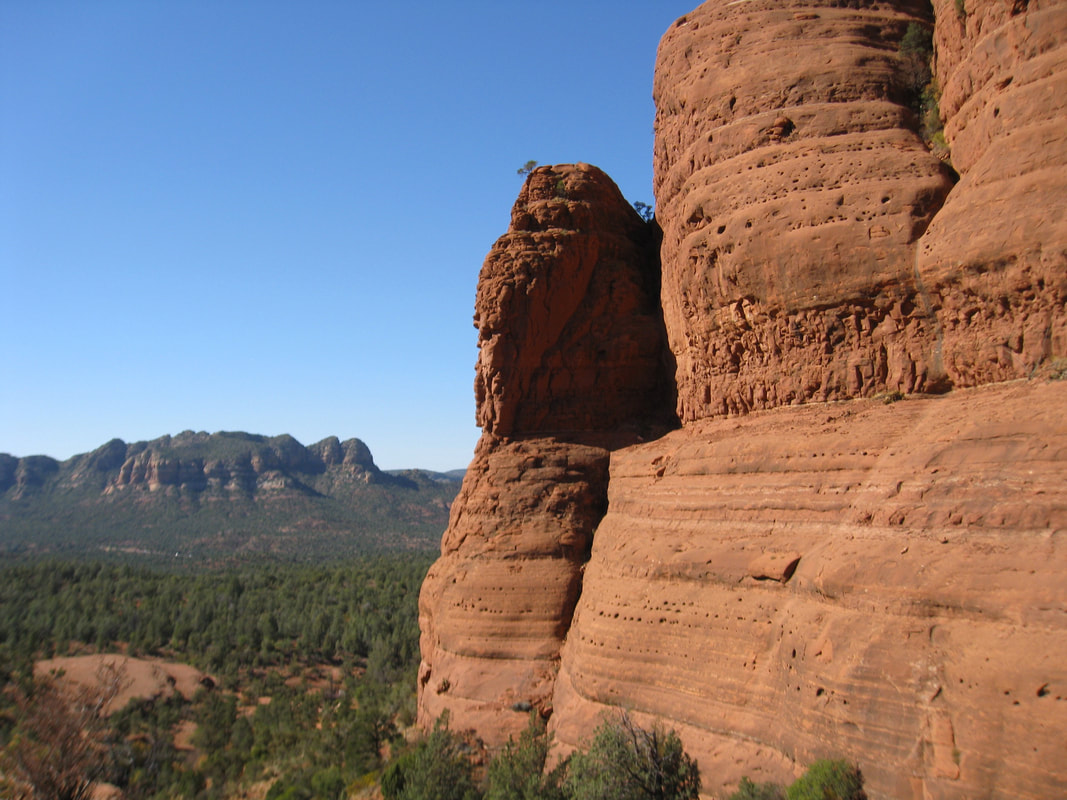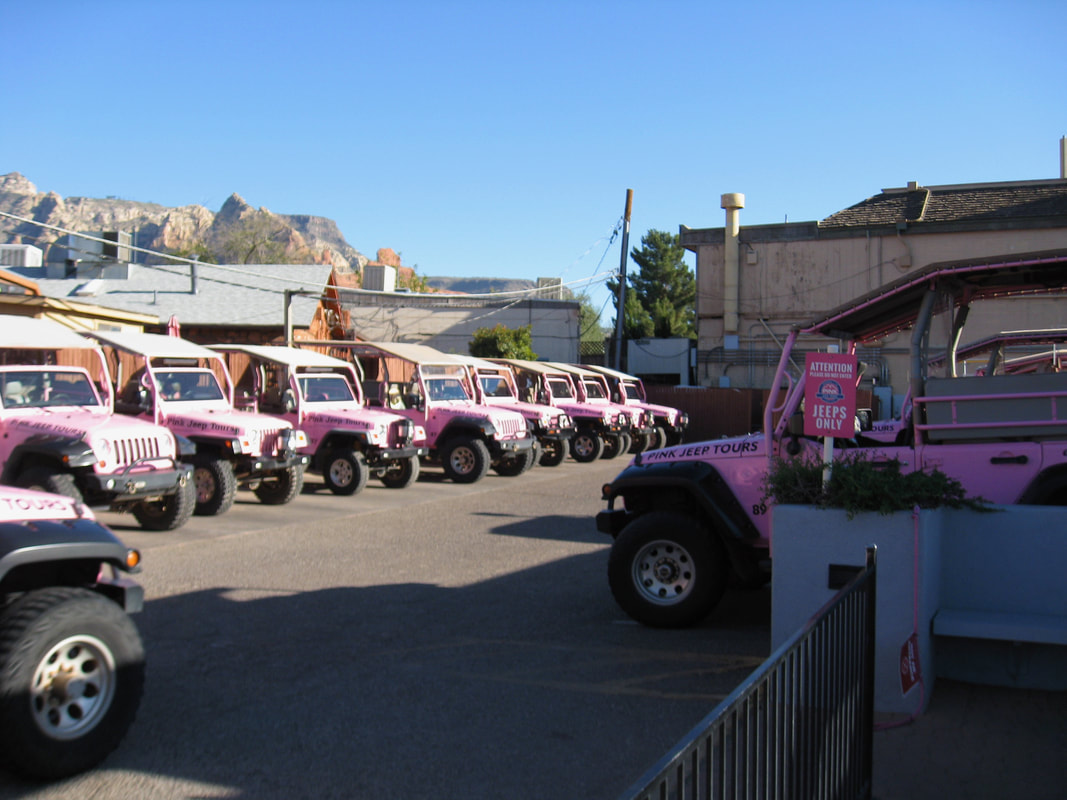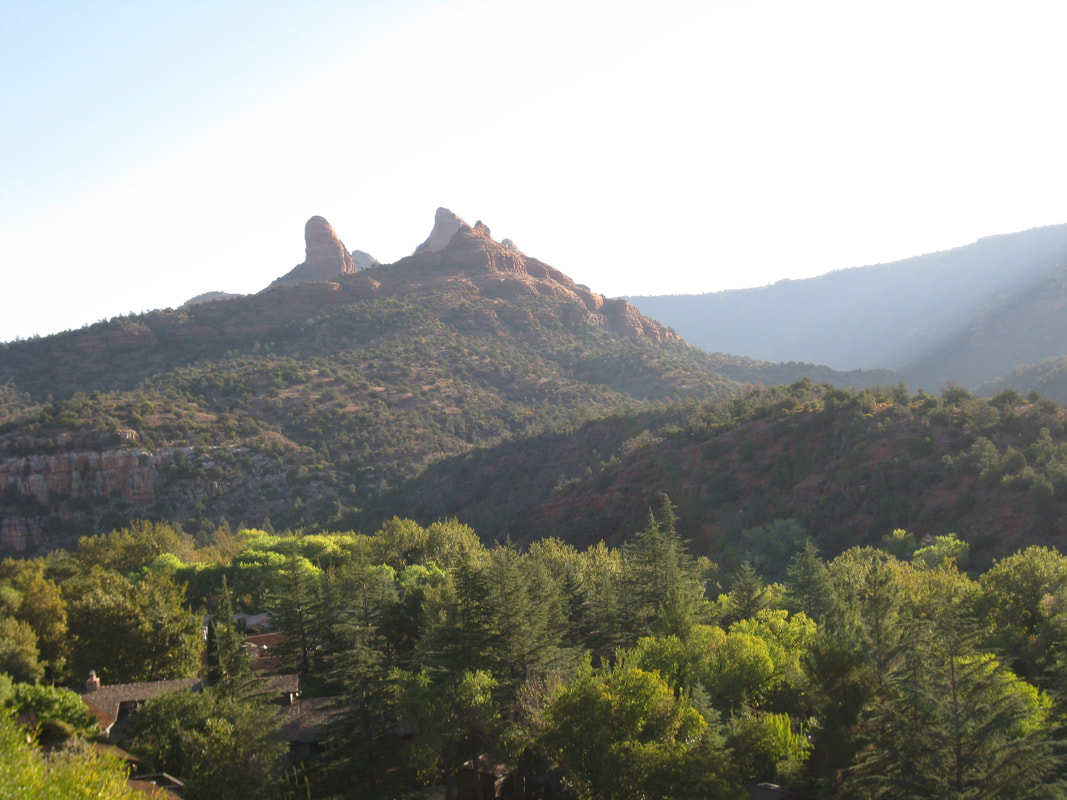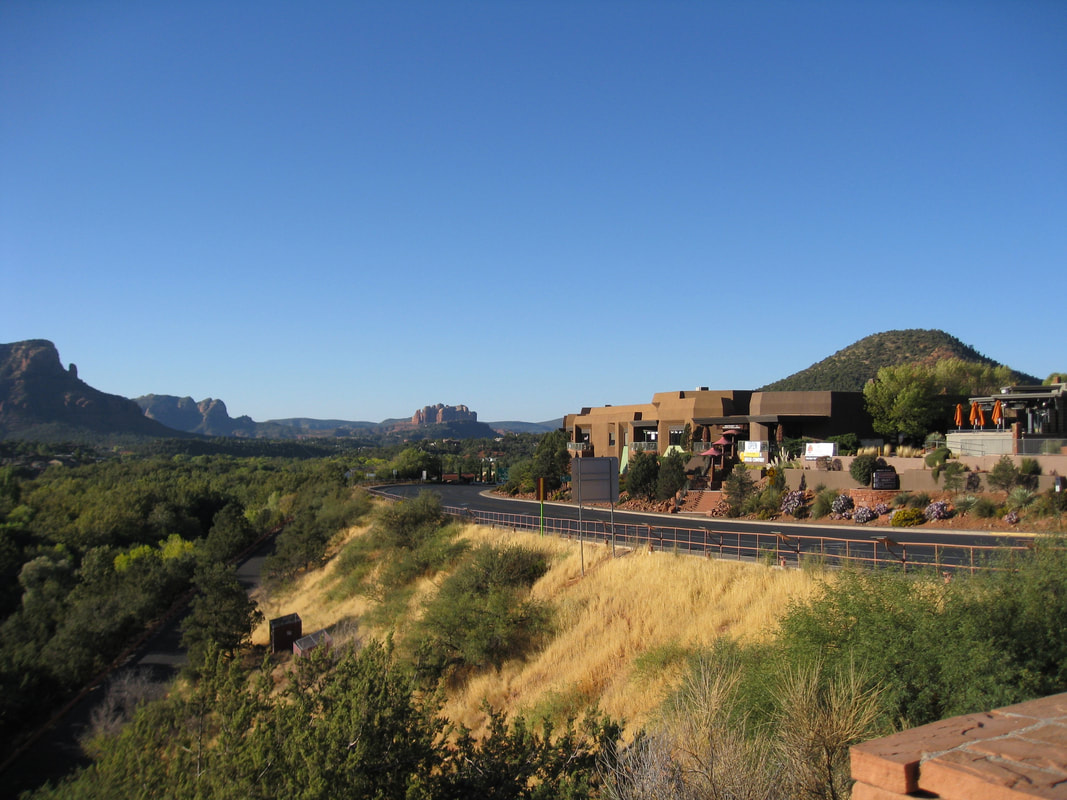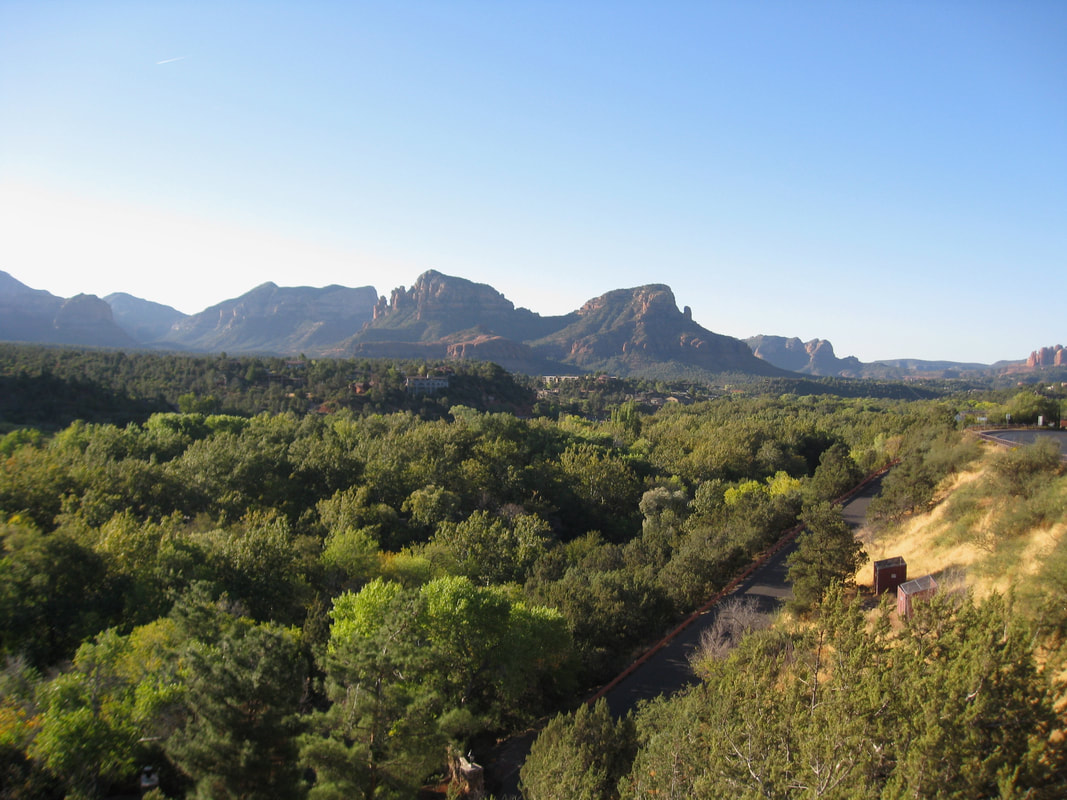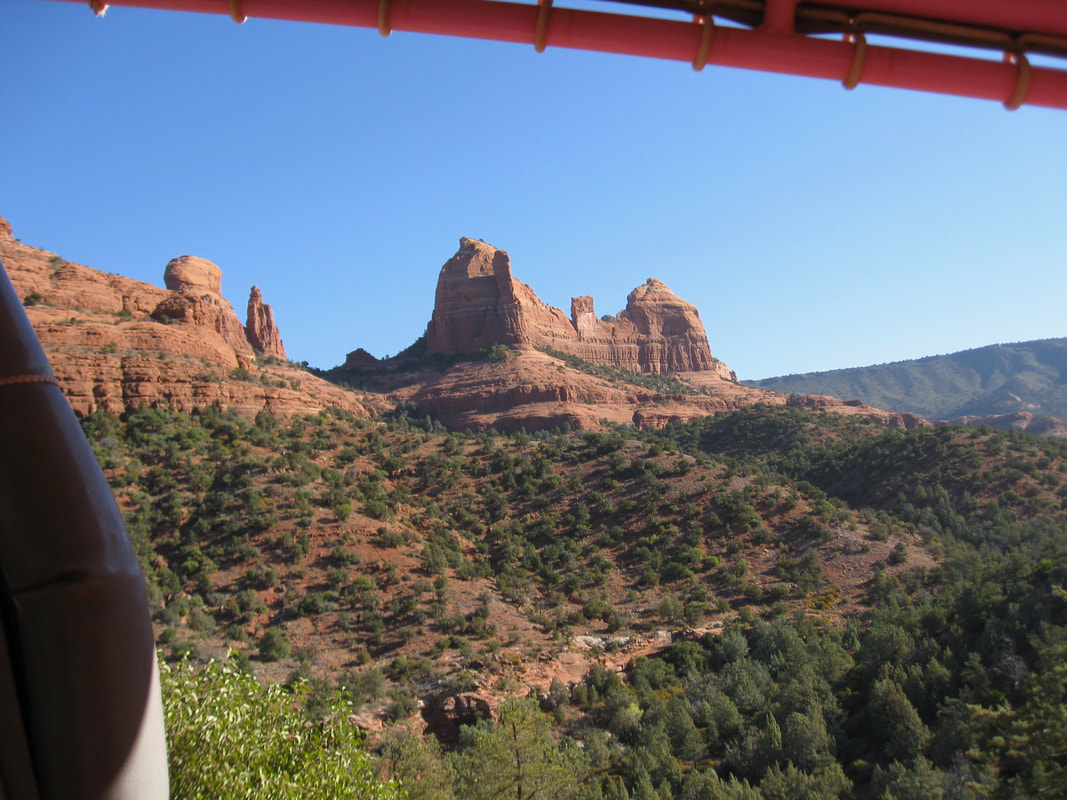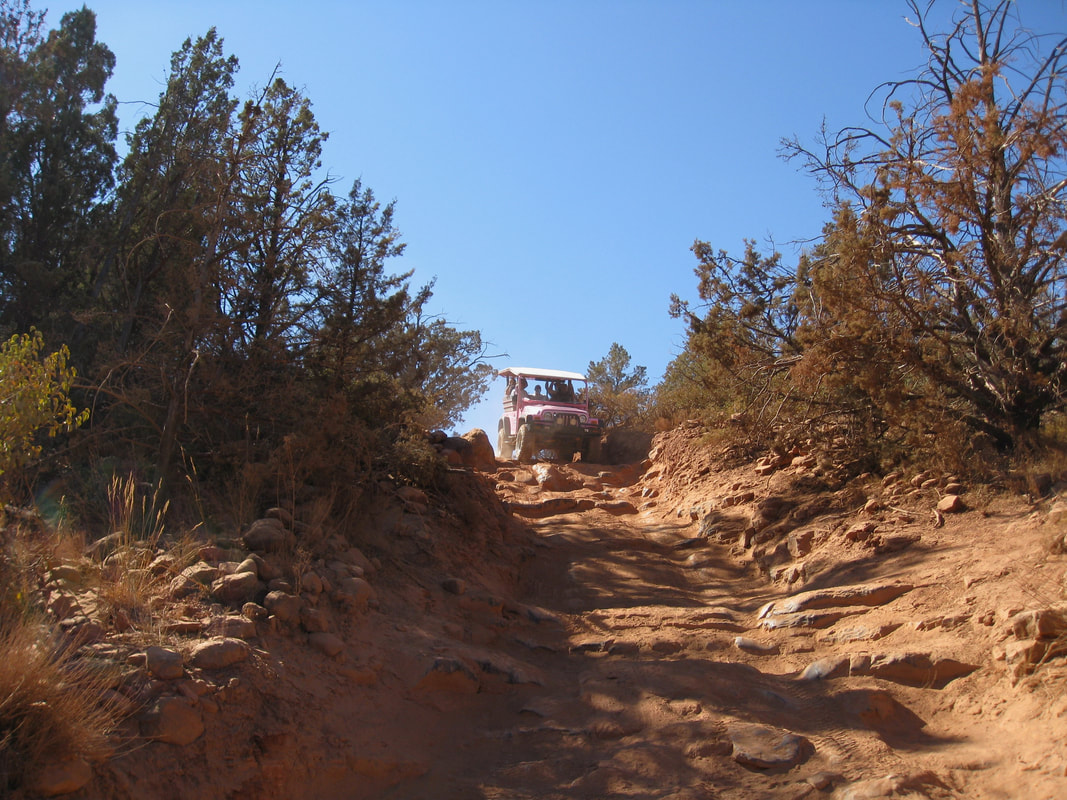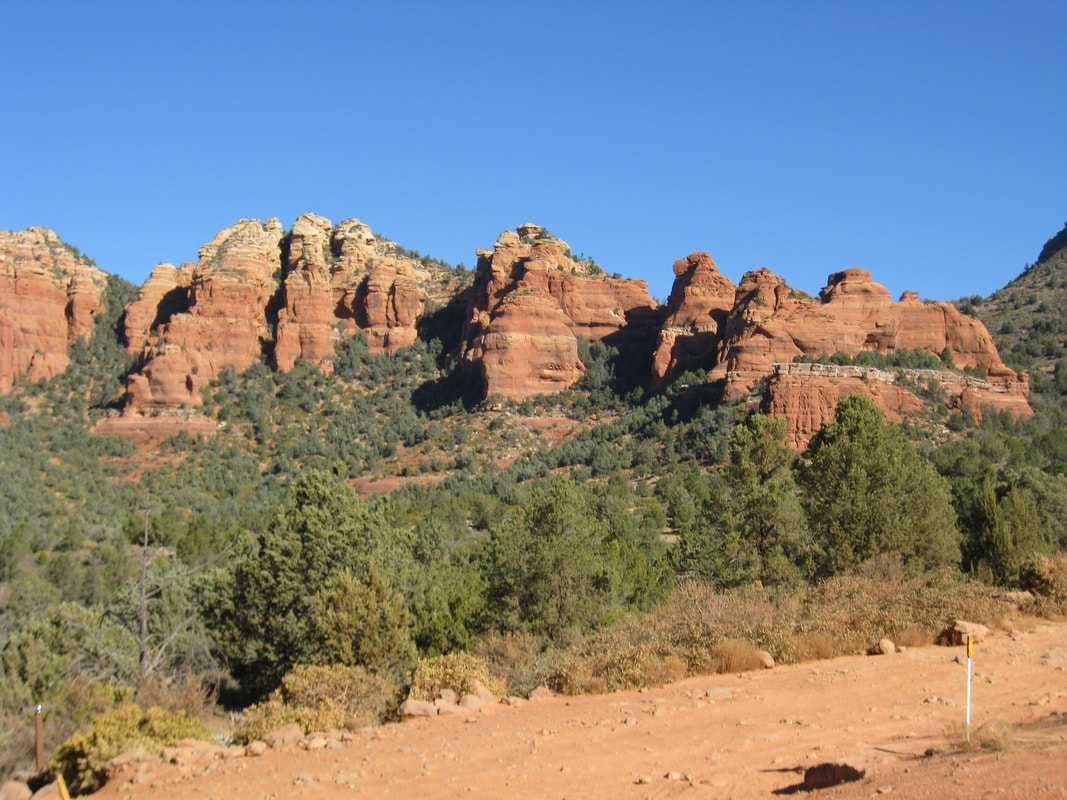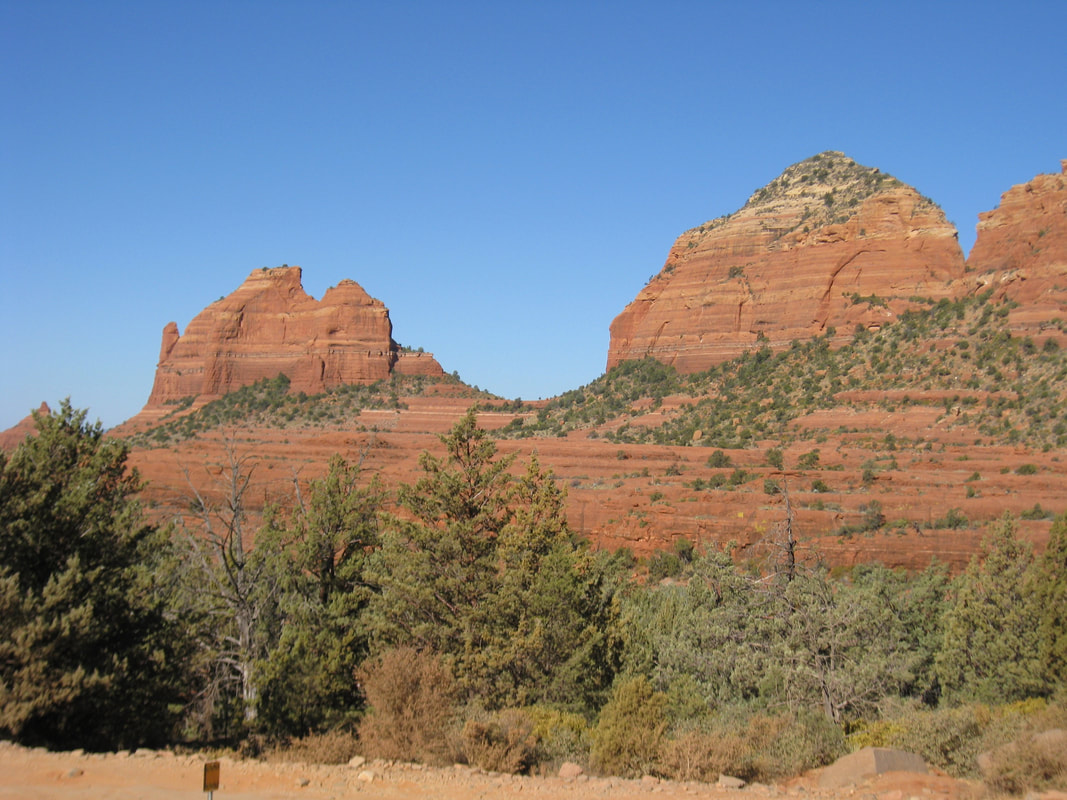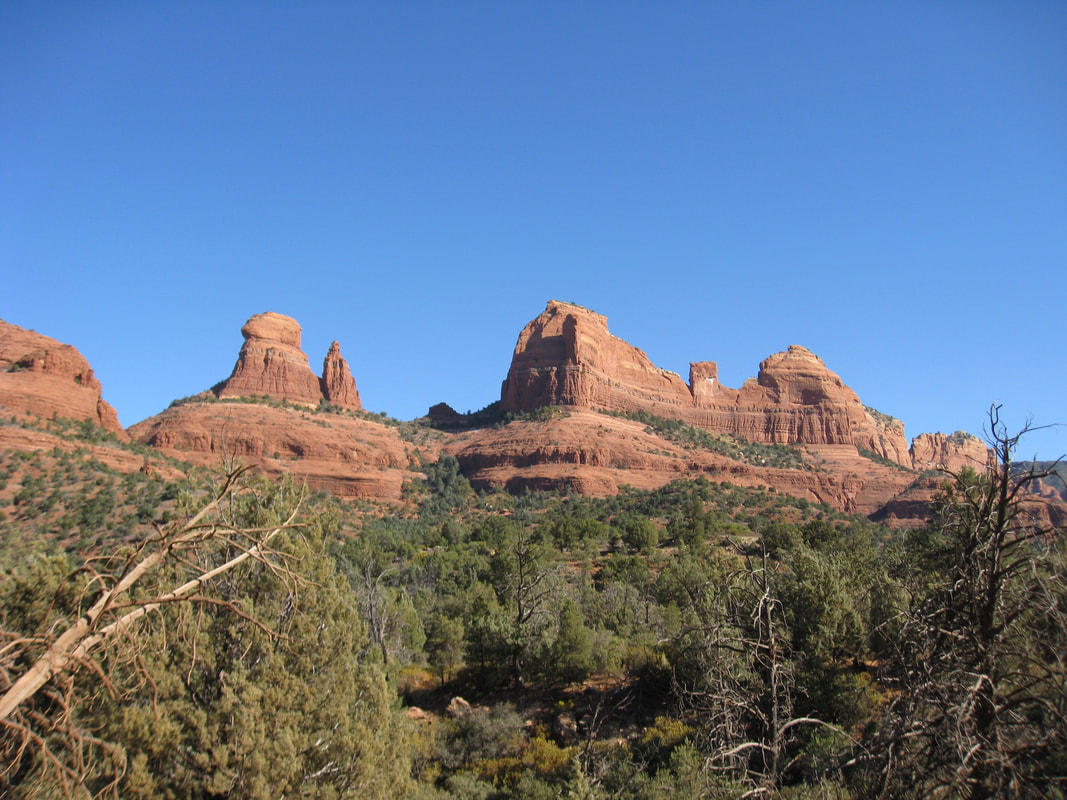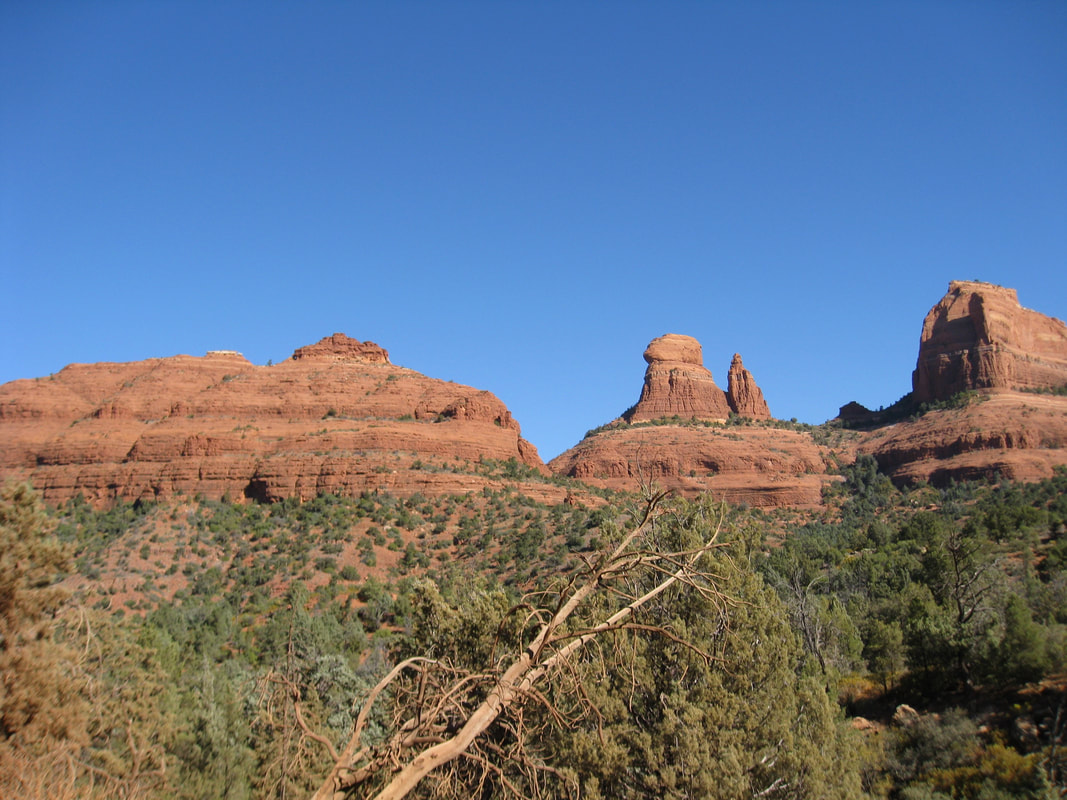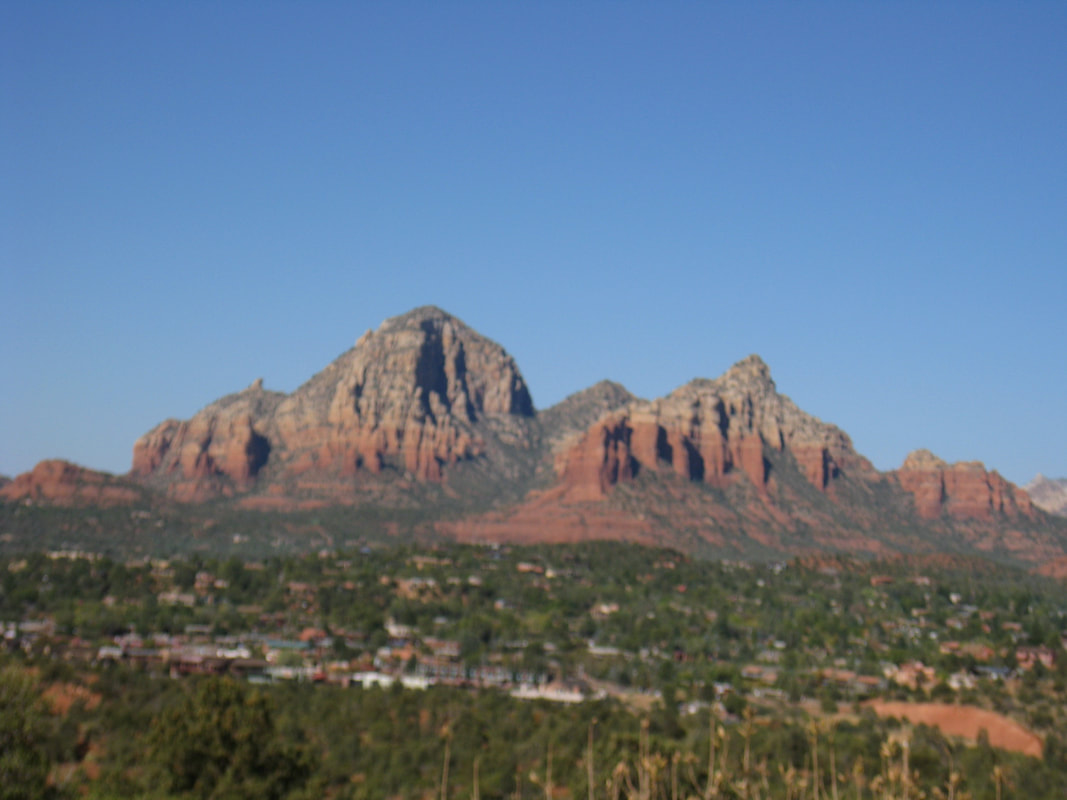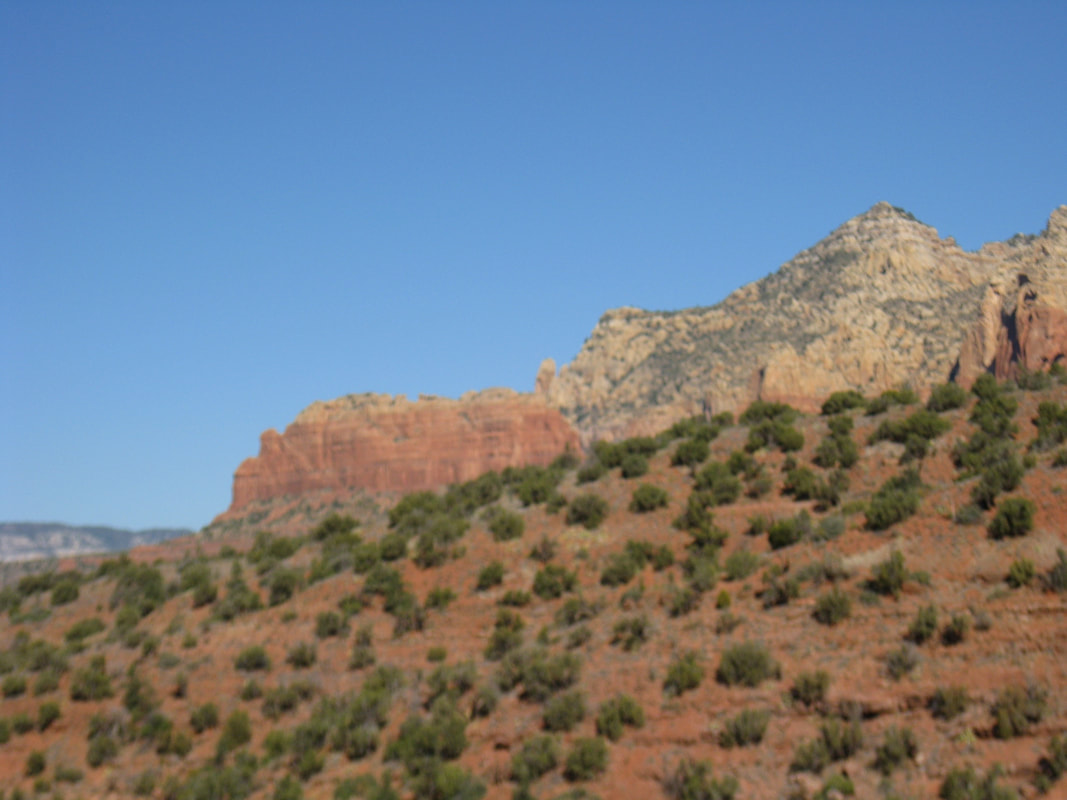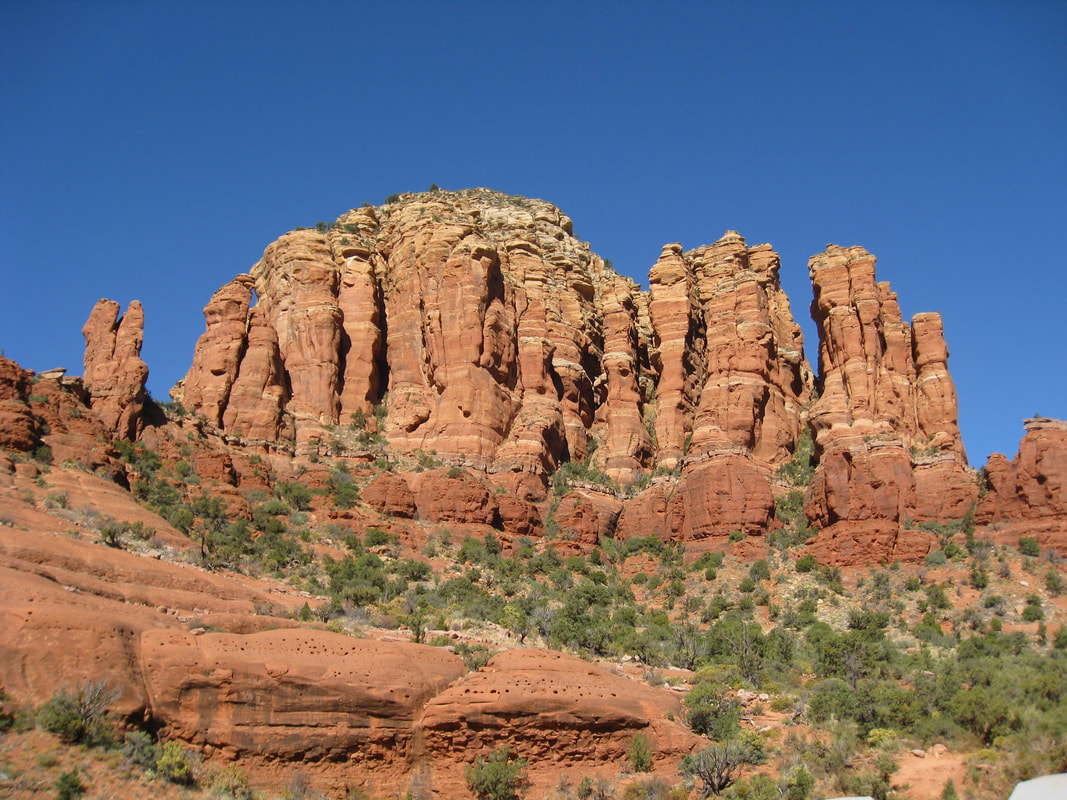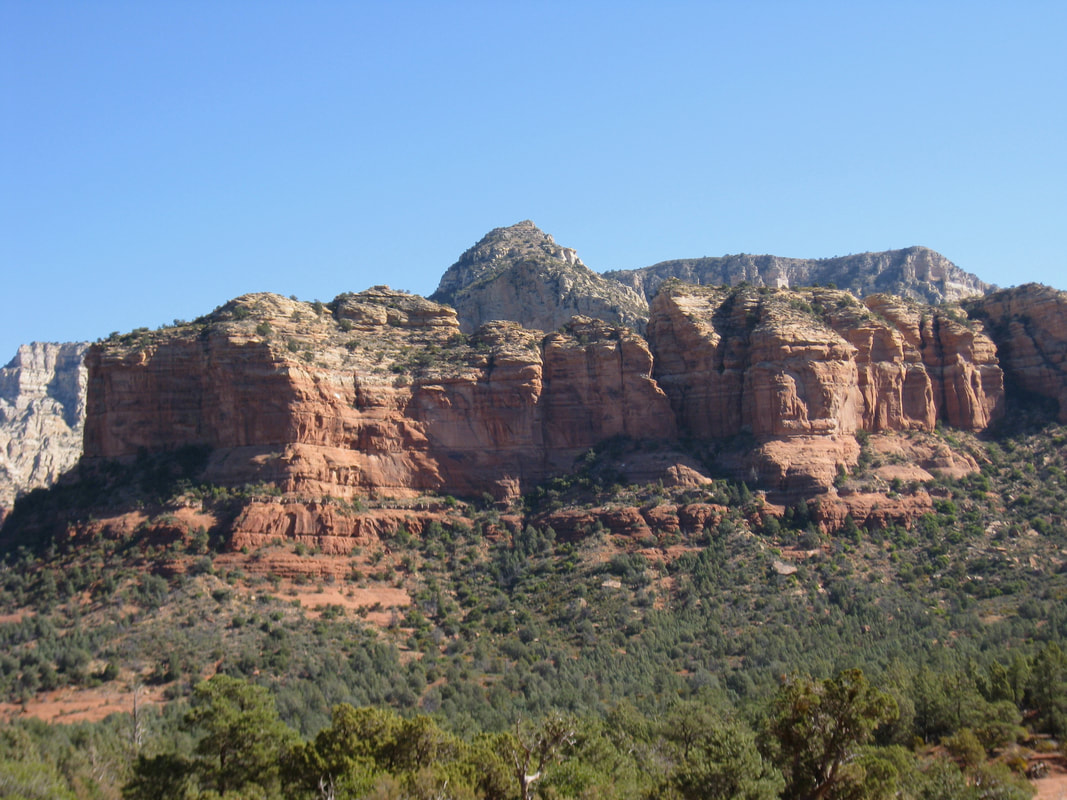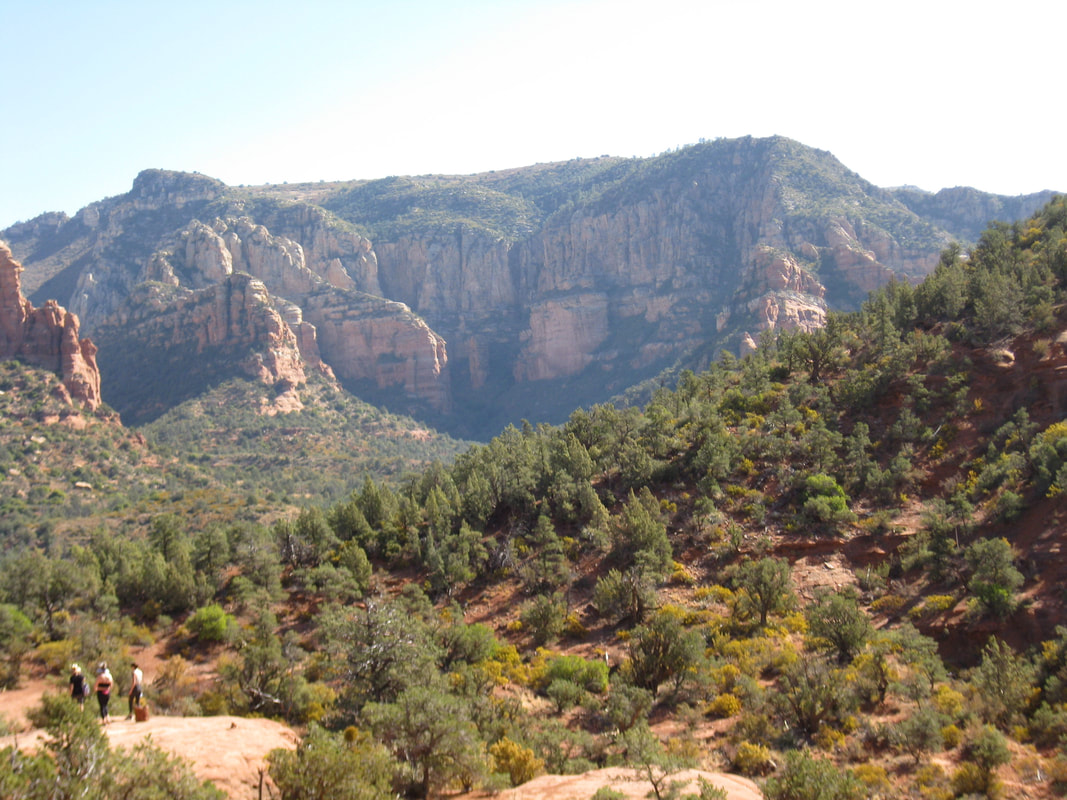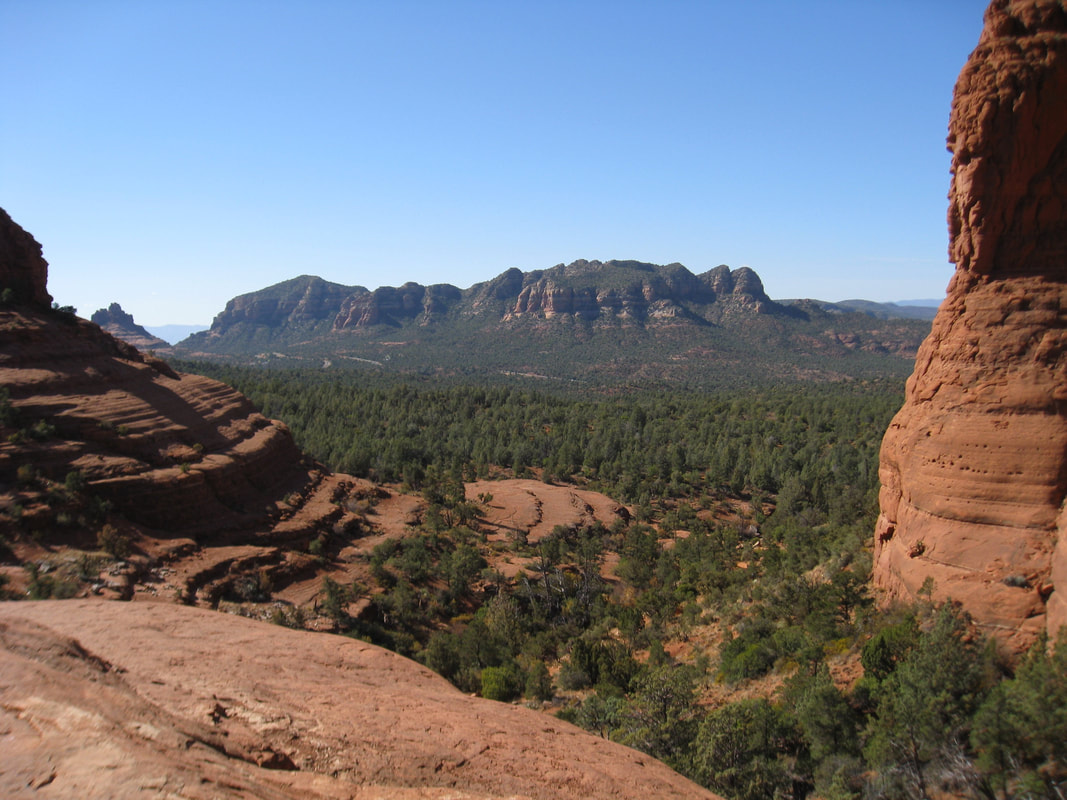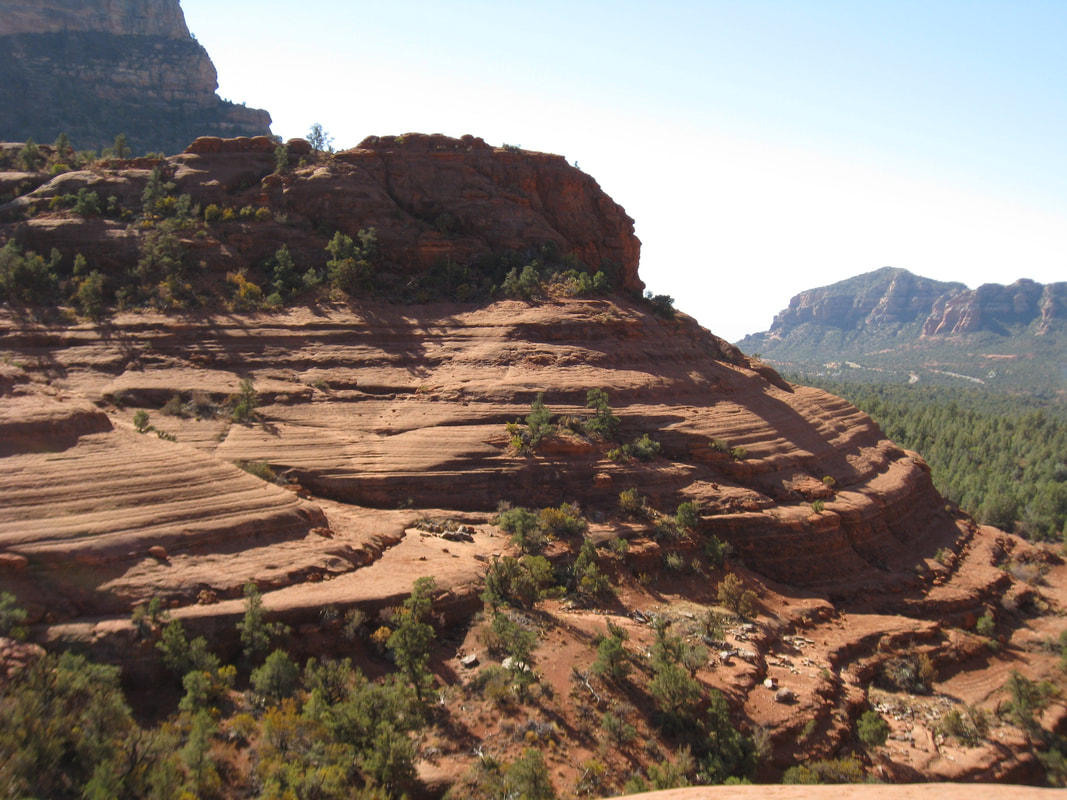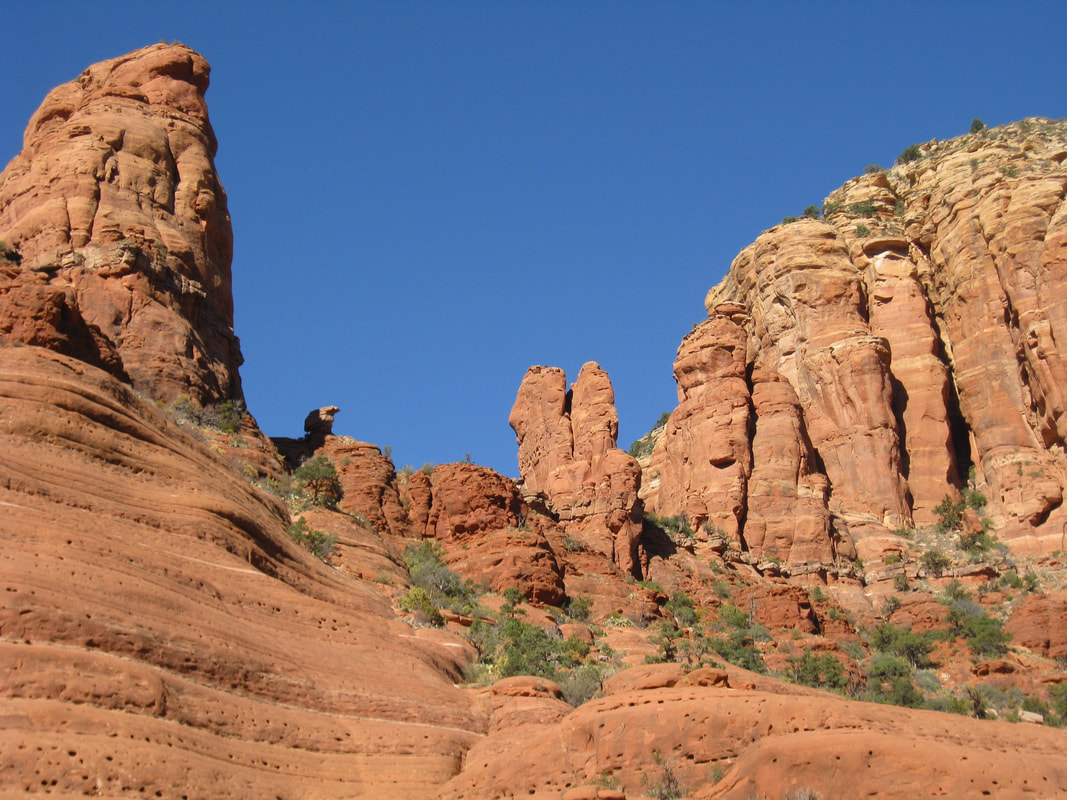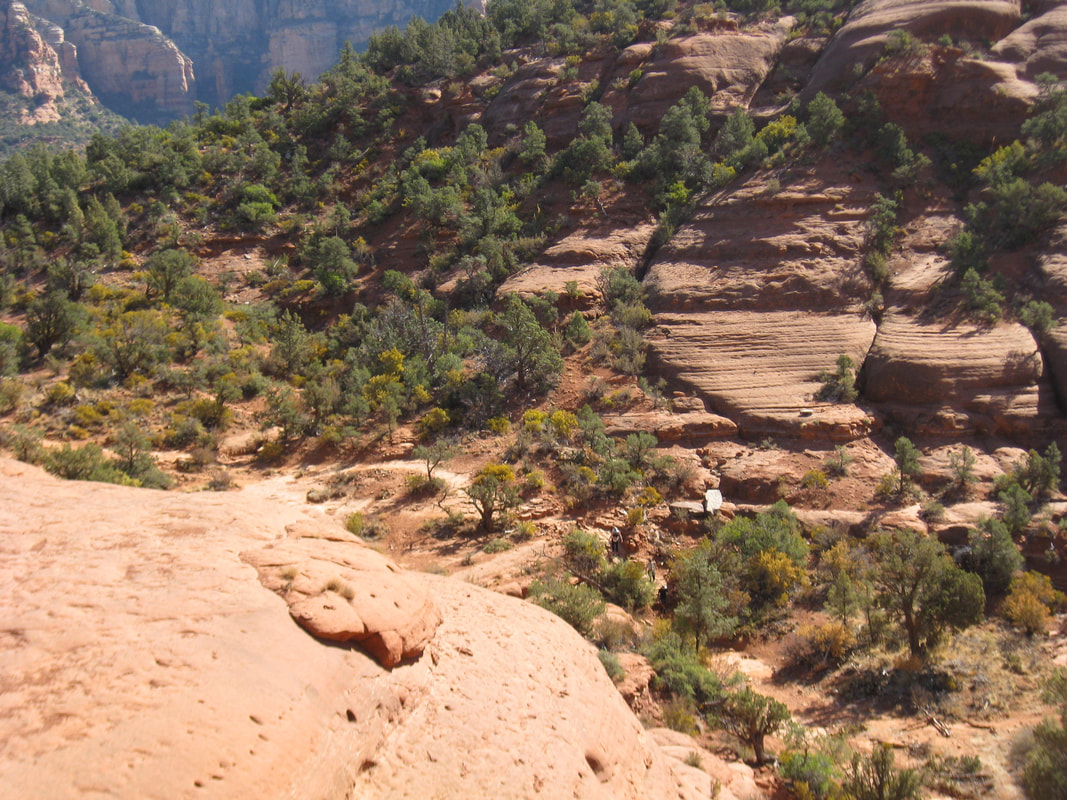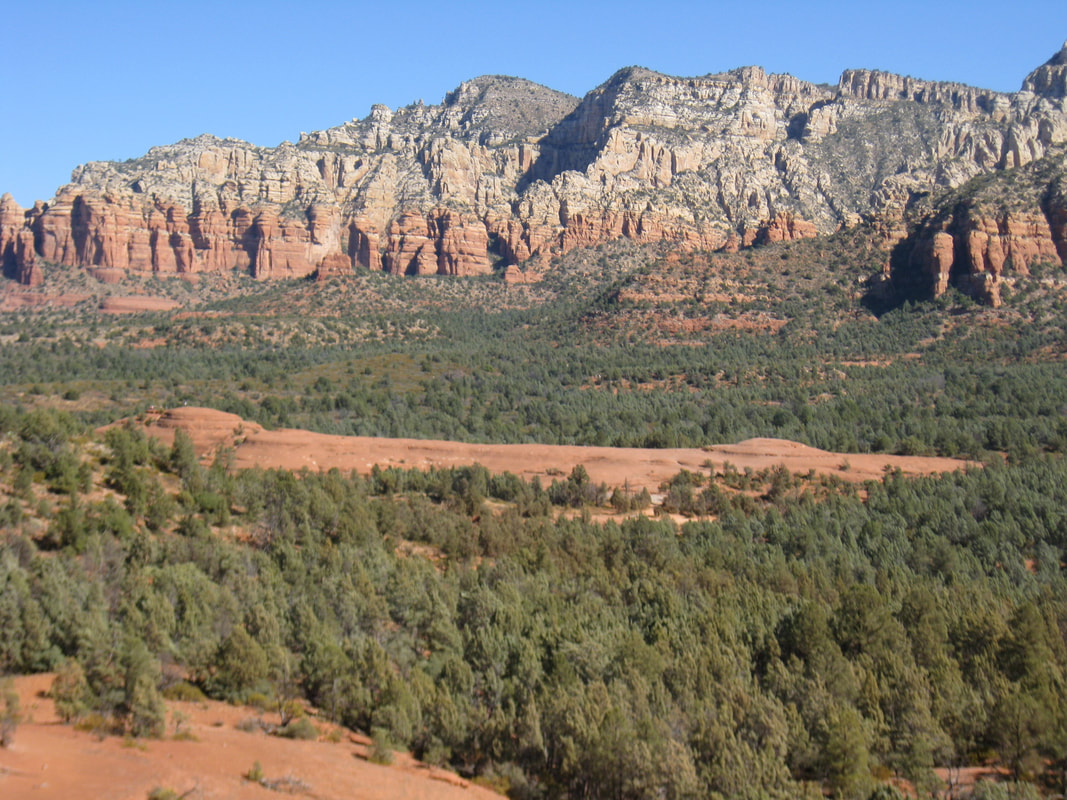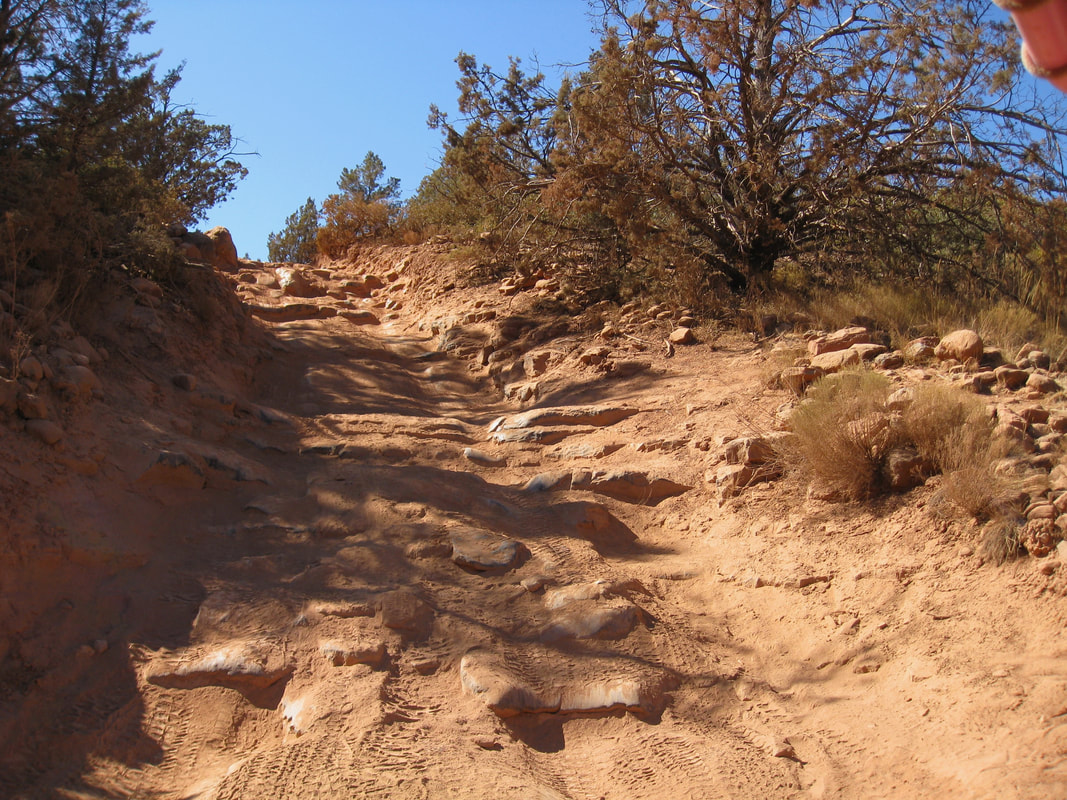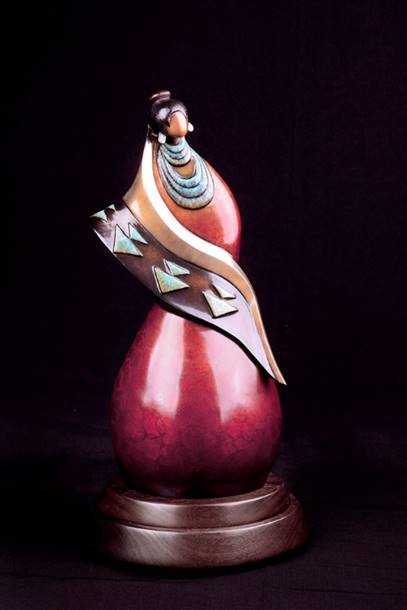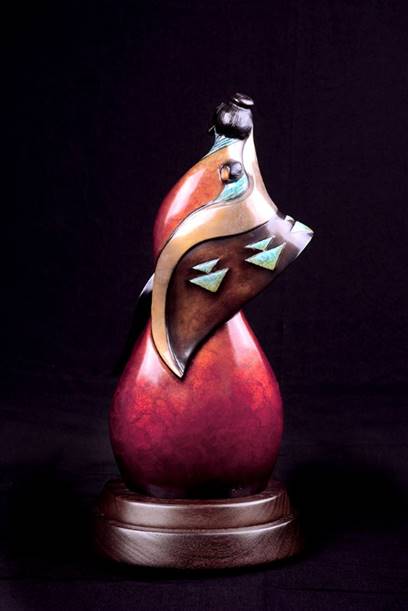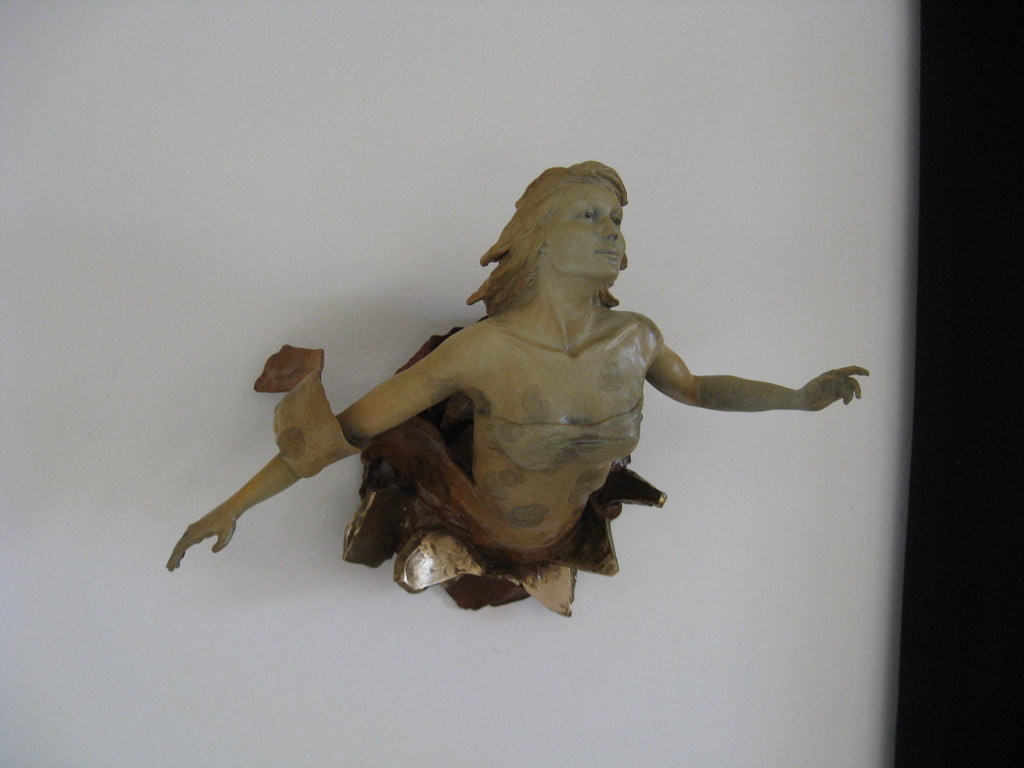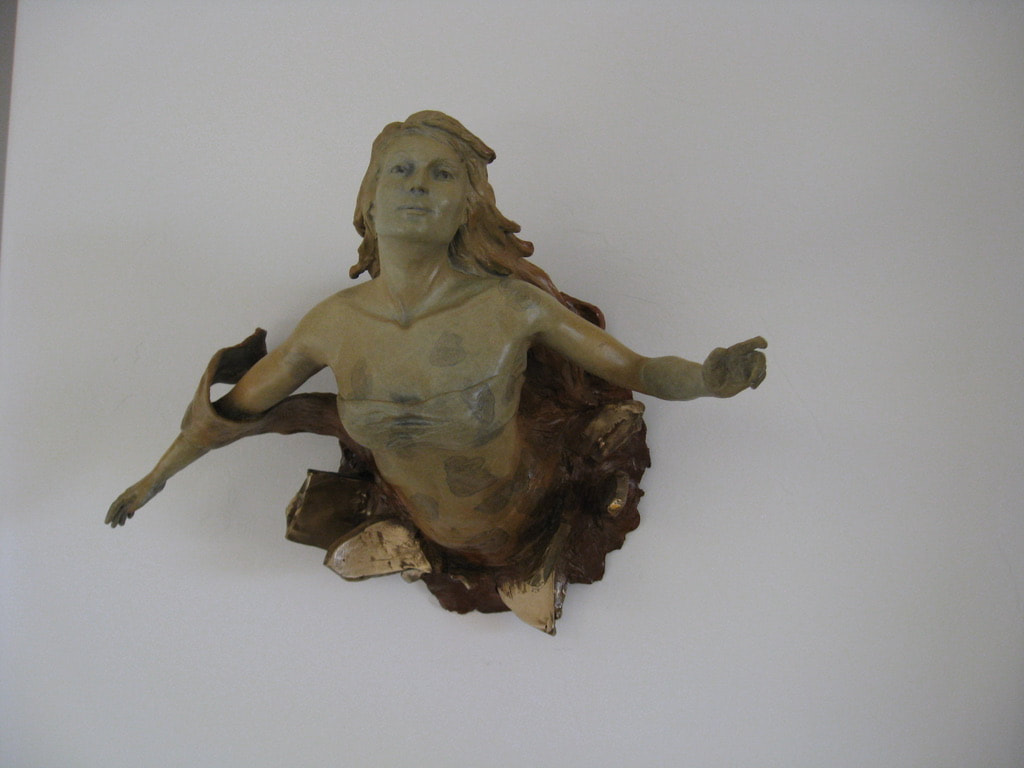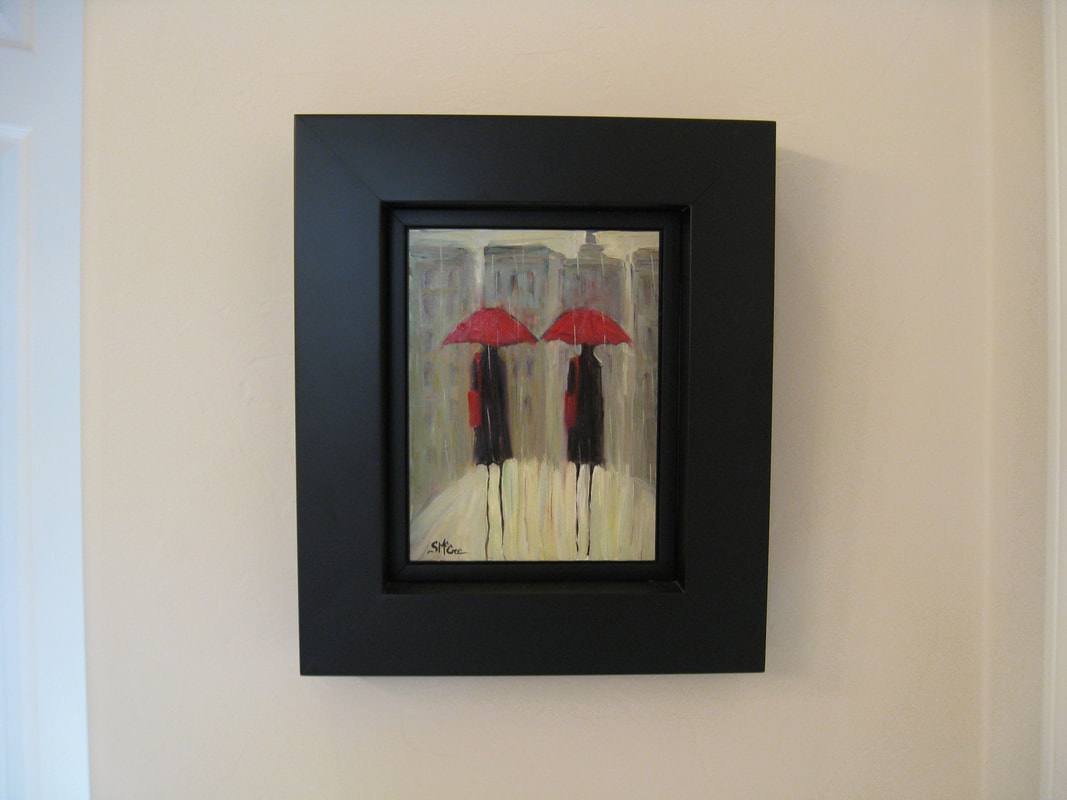SEdona, October 2020
I decided to delay my third trip to Sedona no longer. The heck with Covid-19. I left the north end of Tucson Wednesday morning, 21 October; had lunch in the north end of Phoenix with a friend visiting from Minnesota; stayed three nights at the Holiday Inn Express in Oak Creek; had a great time in perfect weather during my sojourn; and drove home Saturday morning, 24 October, arriving three hours and fifteen minutes after pulling out of the Chevron gas station close to the hotel. Details follow.
Pink Jeep Tour
If there was one main purpose to this trip, other than to be overwhelmed again by Sedona's natural beauty, then it was to get nose-to-nose with the red rocks without having to hike among them. On my two previous trips here I noticed several times a day modified Jeep Wranglers, the color of Pepto-Bismol, zipping along Highways 179 and 89A, usually filled with happy people. As I investigated what this four-wheeled trekking was all about I learned that the Pink Jeep Tour Company offered a variety of expeditions in and around Sedona. (Pink Jeep also has operations at the Grand Canyon and in Las Vegas, as well as an eastern division covering the Smoky Mountains.) The fourteen Sedona tours range from ninety minutes to four hours, departing six to nine times each day, but there are also eight- and ten-hour excursions, round-trip Sedona to the Grand Canyon, separate from those based at the Canyon. Back home in Tucson I selected a combo package of Broken Trail and Scenic Rim, three hours for $170 plus tax.
First a brief history of Pink Jeep.
A California land developer and musician named Don Pratt moved to Sedona from Long Beach and founded Don Pratt Adventures in 1960. A Waikiki vacation sometime after that, when he and his wife stayed at the Royal Hawaiian Hotel, known also by the name Pink Palace of the Pacific, inspired him to give his company and its not-yet-famous jeeps a make-over to what they are today. According to reliable legend, Mrs. Pratt was the driving force to changing the company's name and painting its jeeps. A man named Shawn Wendell bought the company in 1988 and, in turn, Herschend Enterprises acquired it in 2018. The pink jeep fleet, which includes a couple of ten-passenger buses known as trekkers, numbers seventy vehicles, maintained by eight full-time mechanics, who I have to believe stay busy keeping the jeeps in tip-top shape.
My Friday jeep tour started at 09:00, leaving on time from the Uptown Sedona headquarters, with our middle-aged male driver, originally from Rochester, New York, and four passengers: three late-twenty- or early-thirty-something New Yorkers (the city) and me. The other passengers were a trio—a couple plus one, but I couldn't tell his relationship to the other two. They were happy to leave the Big Apple and spend nine days in Utah and Arizona. Our friendly, knowledgeable driver kept us informed, entertained, and safe as we were as off-road as we could be anywhere on the planet.
I must say that I'm happy I joined the tour but I wouldn't do it again. It was great seeing these igneous, sedimentary, and metamorphic rocks of all sizes, pebbles to skyscrapers, from different angles and up close and personal, but the jeep ride was uncomfortable because of the unforgiving, roller-coaster terrain, even though once we left pavement I doubt we ever traveled faster than ten miles an hour. The interior of the jeep was padded well, but for much of the journey we were thrown around back and forth and sideways, with the seat belts just keeping us inside the Wrangler.
And, yes, we had to wear masks.
First a brief history of Pink Jeep.
A California land developer and musician named Don Pratt moved to Sedona from Long Beach and founded Don Pratt Adventures in 1960. A Waikiki vacation sometime after that, when he and his wife stayed at the Royal Hawaiian Hotel, known also by the name Pink Palace of the Pacific, inspired him to give his company and its not-yet-famous jeeps a make-over to what they are today. According to reliable legend, Mrs. Pratt was the driving force to changing the company's name and painting its jeeps. A man named Shawn Wendell bought the company in 1988 and, in turn, Herschend Enterprises acquired it in 2018. The pink jeep fleet, which includes a couple of ten-passenger buses known as trekkers, numbers seventy vehicles, maintained by eight full-time mechanics, who I have to believe stay busy keeping the jeeps in tip-top shape.
My Friday jeep tour started at 09:00, leaving on time from the Uptown Sedona headquarters, with our middle-aged male driver, originally from Rochester, New York, and four passengers: three late-twenty- or early-thirty-something New Yorkers (the city) and me. The other passengers were a trio—a couple plus one, but I couldn't tell his relationship to the other two. They were happy to leave the Big Apple and spend nine days in Utah and Arizona. Our friendly, knowledgeable driver kept us informed, entertained, and safe as we were as off-road as we could be anywhere on the planet.
I must say that I'm happy I joined the tour but I wouldn't do it again. It was great seeing these igneous, sedimentary, and metamorphic rocks of all sizes, pebbles to skyscrapers, from different angles and up close and personal, but the jeep ride was uncomfortable because of the unforgiving, roller-coaster terrain, even though once we left pavement I doubt we ever traveled faster than ten miles an hour. The interior of the jeep was padded well, but for much of the journey we were thrown around back and forth and sideways, with the seat belts just keeping us inside the Wrangler.
And, yes, we had to wear masks.
Sedona on Film
Sedona has been a favorite of filmmakers since the 1920s. IMDB lists 264 films and television shows that Hollywood and independent directors have shot in whole or in part in Sedona. Here are a few of the titles:
|
|
...and supposedly another 239. Sedona was such a busy location for making movies and TV shows that there was once a film studio in the immediate area, but it was torn down a number of years ago.
In preparing for this short trip I rewatched two of the most famous Westerns from the Golden Era filmed in Red Rock country; the following reviews will be part of the second volume of my movie books.
Broken Arrow (1950)
Classic Western directed by Delmer Daves and starring James Stewart. I had seen this several years ago, but as I'm preparing for a third visit to Sedona, where I will be taking a three-hour jeep tour that includes filming sites for this picture, I thought I'd get reacquainted with it. Only the second Hollywood film to depict American Indians in a sympathetic light, Broken Arrow, nominated for three Academy Awards, including one for Brooklyn-native Jeff Chandler for his portrayal of Cochise, had as its author blacklisted writer Albert Maltz, who based his screenplay on the lengthy novel, Blood Brother.
It's 1870 Arizona, where the bitter war between the Apaches and the U.S. military rages. Retired captain Tom Jeffords saves the life of a teenaged Apache boy, thereby starting the process of bringing peace between the two peoples. Bumps, big and small, along the way, with the film ending on a sad but still hopeful note. Sixteen-year-old beauty, Debra Paget, plays an Indian princess and love interest to forty-one-year-old Stewart. Jay Silverheels (Tonto from The Lone Ranger television series), a Canadian Mohawk, is Geronimo, a renegade Apache. Two hundred and forty locals from Fort Apache Indian Reservation are in the background as extras. Look for Will Geer, Grandpa from The Waltons, as a villainous white guy. Ms. Paget, who had roles in House of Strangers, Fourteen Hours, Love Me Tender, and The Ten Commandments, retired from film acting in 1963. Her second of three marriages, to B director Budd Boetticher, ended after twenty-two days. She is still alive today at eighty-seven years old.
Johnny Guitar (1954)
A great Western or a camp classic? This Nicholas Ray film has adherents to each view, and I understand their perspectives. Some silly lines of dialogue aside, the 110-minute movie is intense, and, unusual for a Western, has two women driving the action. On the other hand, in the camp camp, it's not easy overlooking some of the ridiculous dialogue; almost any film with Joan Crawford, with her fiery red lipstick and bulging eyes, tends to be exaggerated by her mere presence in it; Mercedes McCambridge's histrionics are in overdrive in all of her scenes; the characters played by the two male leads, macho Sterling Hayden and more macho Scott Brady, both in their thirties and love interests to the almost-fifty-year-old Crawford, are named Johnny Guitar and The Dancing Kid; then we have the lesbian subtext underscoring the bitter relationship between Vienna (Crawford) and Emma (McCambridge); and finally there's the anachronistic Peggy Lee song over the closing credits.
Hmmm, I guess in many ways, it is a riot.
The story is about independent Vienna opening a saloon on the far outskirts of town, with the ultimate vision of her drinking and gambling establishment being the anchor for a new town when the planned railroad passes that-a-way. Well, the locals don't like her or her idea and try to force her to leave, resorting to extreme measures to kick her out. Will they succeed?
The supporting cast of Ernest Borgnine, John Carradine, Ward Bond, Denver Pyle, Royal Dano (you'd recognize him), and Ben Cooper (you'd recognize him, too) participates in gunfights, lynchings, bank robberies, and posses against a Southwestern setting, all staples of a Western.
Should you see it? Yes. Its reception sixty-six years ago was mixed, but film scholars have reevaluated it over the proverbial years and consider it an important contribution to the genre, although some place it equally in the dark world of film noir. I decided to watch this again as additional prep for my trip to Sedona in a few days, as Ray shot much of the film there.
And then, the day I returned home, as part of my debriefing, I watched the 2012 film, Sedona.
Sedona (2012)
I can't believe what I'm about to write: I enjoyed Sedona. I added this to my queue on Amazon Prime a couple of nights ago while I was still in Sedona, almost as an obligation, as what I had read about it did not make it sound appealing. But because it was filmed in Sedona and is about Sedona I put it on my watchlist and then forced myself to give it a chance the day after I got back from my short, third trip to that amazing place, regardless of my preconceived notions about the movie. I can explain why I liked the film by way of an analogy: it's like a New Age version of a Hallmark Christmas movie. If you've watched any of those holiday films—and who among us hasn't?—then you know their vibe or sensibility or whatever you want to call it. Well, that's what Sedona has in abundance. Corny? Schmaltzy? Hokey? Yep, yep, and more yep. But the characters are hard to resist and the story is so shamelessly obvious the viewer can't help but get swept away in the proceedings.
We have two stories in Sedona. A middle-aged, freelance advertising woman, played by Frances Fisher, is running late for an important meeting in Phoenix when a single-engine, sightseeing biplane with engine trouble collides her car while making an emergency landing on state road 89A, one of the two main thoroughfares in Sedona. She's delayed a couple more hours as a result and, while she waits for her car to be repaired, meets a cross-section of the locals, all of whom at first try her patience. The second story has a modern family of two dads with two sons, one of the former being a Type A corporate lawyer, hiking in the inconceivable beauty of the Red Rock country, where the youngest boy, a seven-year-old, gets lost. Like the car and the plane at the beginning of the film, these two tales collide at the end with a message you could have guessed eighty minutes earlier.
If you've been to Sedona, then you have to watch this, as its breathtaking landscape is on glorious display throughout the film and will bring back memories of your visits there, no matter how recent or how distant. If you've never been to Sedona, then you should still watch the film for its good, clean, kitschy fun—and make plans immediately after to travel there.
In preparing for this short trip I rewatched two of the most famous Westerns from the Golden Era filmed in Red Rock country; the following reviews will be part of the second volume of my movie books.
Broken Arrow (1950)
Classic Western directed by Delmer Daves and starring James Stewart. I had seen this several years ago, but as I'm preparing for a third visit to Sedona, where I will be taking a three-hour jeep tour that includes filming sites for this picture, I thought I'd get reacquainted with it. Only the second Hollywood film to depict American Indians in a sympathetic light, Broken Arrow, nominated for three Academy Awards, including one for Brooklyn-native Jeff Chandler for his portrayal of Cochise, had as its author blacklisted writer Albert Maltz, who based his screenplay on the lengthy novel, Blood Brother.
It's 1870 Arizona, where the bitter war between the Apaches and the U.S. military rages. Retired captain Tom Jeffords saves the life of a teenaged Apache boy, thereby starting the process of bringing peace between the two peoples. Bumps, big and small, along the way, with the film ending on a sad but still hopeful note. Sixteen-year-old beauty, Debra Paget, plays an Indian princess and love interest to forty-one-year-old Stewart. Jay Silverheels (Tonto from The Lone Ranger television series), a Canadian Mohawk, is Geronimo, a renegade Apache. Two hundred and forty locals from Fort Apache Indian Reservation are in the background as extras. Look for Will Geer, Grandpa from The Waltons, as a villainous white guy. Ms. Paget, who had roles in House of Strangers, Fourteen Hours, Love Me Tender, and The Ten Commandments, retired from film acting in 1963. Her second of three marriages, to B director Budd Boetticher, ended after twenty-two days. She is still alive today at eighty-seven years old.
Johnny Guitar (1954)
A great Western or a camp classic? This Nicholas Ray film has adherents to each view, and I understand their perspectives. Some silly lines of dialogue aside, the 110-minute movie is intense, and, unusual for a Western, has two women driving the action. On the other hand, in the camp camp, it's not easy overlooking some of the ridiculous dialogue; almost any film with Joan Crawford, with her fiery red lipstick and bulging eyes, tends to be exaggerated by her mere presence in it; Mercedes McCambridge's histrionics are in overdrive in all of her scenes; the characters played by the two male leads, macho Sterling Hayden and more macho Scott Brady, both in their thirties and love interests to the almost-fifty-year-old Crawford, are named Johnny Guitar and The Dancing Kid; then we have the lesbian subtext underscoring the bitter relationship between Vienna (Crawford) and Emma (McCambridge); and finally there's the anachronistic Peggy Lee song over the closing credits.
Hmmm, I guess in many ways, it is a riot.
The story is about independent Vienna opening a saloon on the far outskirts of town, with the ultimate vision of her drinking and gambling establishment being the anchor for a new town when the planned railroad passes that-a-way. Well, the locals don't like her or her idea and try to force her to leave, resorting to extreme measures to kick her out. Will they succeed?
The supporting cast of Ernest Borgnine, John Carradine, Ward Bond, Denver Pyle, Royal Dano (you'd recognize him), and Ben Cooper (you'd recognize him, too) participates in gunfights, lynchings, bank robberies, and posses against a Southwestern setting, all staples of a Western.
Should you see it? Yes. Its reception sixty-six years ago was mixed, but film scholars have reevaluated it over the proverbial years and consider it an important contribution to the genre, although some place it equally in the dark world of film noir. I decided to watch this again as additional prep for my trip to Sedona in a few days, as Ray shot much of the film there.
And then, the day I returned home, as part of my debriefing, I watched the 2012 film, Sedona.
Sedona (2012)
I can't believe what I'm about to write: I enjoyed Sedona. I added this to my queue on Amazon Prime a couple of nights ago while I was still in Sedona, almost as an obligation, as what I had read about it did not make it sound appealing. But because it was filmed in Sedona and is about Sedona I put it on my watchlist and then forced myself to give it a chance the day after I got back from my short, third trip to that amazing place, regardless of my preconceived notions about the movie. I can explain why I liked the film by way of an analogy: it's like a New Age version of a Hallmark Christmas movie. If you've watched any of those holiday films—and who among us hasn't?—then you know their vibe or sensibility or whatever you want to call it. Well, that's what Sedona has in abundance. Corny? Schmaltzy? Hokey? Yep, yep, and more yep. But the characters are hard to resist and the story is so shamelessly obvious the viewer can't help but get swept away in the proceedings.
We have two stories in Sedona. A middle-aged, freelance advertising woman, played by Frances Fisher, is running late for an important meeting in Phoenix when a single-engine, sightseeing biplane with engine trouble collides her car while making an emergency landing on state road 89A, one of the two main thoroughfares in Sedona. She's delayed a couple more hours as a result and, while she waits for her car to be repaired, meets a cross-section of the locals, all of whom at first try her patience. The second story has a modern family of two dads with two sons, one of the former being a Type A corporate lawyer, hiking in the inconceivable beauty of the Red Rock country, where the youngest boy, a seven-year-old, gets lost. Like the car and the plane at the beginning of the film, these two tales collide at the end with a message you could have guessed eighty minutes earlier.
If you've been to Sedona, then you have to watch this, as its breathtaking landscape is on glorious display throughout the film and will bring back memories of your visits there, no matter how recent or how distant. If you've never been to Sedona, then you should still watch the film for its good, clean, kitschy fun—and make plans immediately after to travel there.
More of what's made Sedona Famous...
So Much Art
Sedona is replete with art galleries—thirty-seven listed in the Sedona Galleries Association, including some or all of the fourteen in Tlaquepaque Arts & Shopping Village. I'm pretty sure the total is greater than that but I can't find a resource that gives a definitive number. I haven't visited every one of them but I know I've walked through most. And most of them, unfortunately, aren't to my taste. While the artists and artisans whose work is displayed in these shops have a gazillion times more talent than I have, much of what I've looked at still seems like the product of amateurs. (Sorry if I sound like a snob.) I don't think it's simply the nature of Southwest art either, as over the years I've bought several pieces of that genre in Albuquerque, New Mexico, and all are beautiful by any measure. Whatever the reason, whatever my thinking is, on my future trips to Sedona I'll happily check out any galleries new to me but only three others will I revisit:
- Carré d'Artistes Art Gallery, which is in Tlaquepaque and has paintings only
- Exposures International Gallery of Fine Art, a standalone building on 179 with art of all media
- Visions Fine Arts, one of the shops at Hyatt Piñon Point, also selling all media
